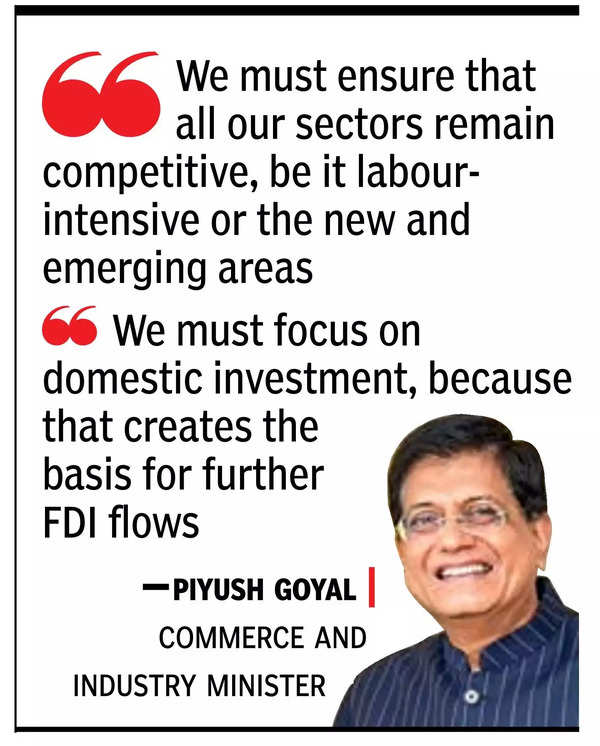Ten years after PM Narendra Modi announced the ‘Make in India‘ initiative, commerce and industry minister Piyush Goyal says India has made tremendous progress in manufacturing and is poised to increase the share of the sector in overall GDP. In an interview with TOI over the phone from Australia, Goyal says there is massive interest in developed countries for a renewed thrust for offshoring and India will gain because of its own competitive advantage, and not because of the China Plus One strategy.Excerpts:
It’s been 10 years since Make in India was launched and one of the objectives was to increase the share of manufacturing to 25% of GDP…
In 2014, we inherited a broken economy, with poor investor mood, low GDP growth with high inflation, a weak currency and a series of corruption scandals. Confidence in the India story was abysmally low. PM Modi took the challenge and introduced the Make In India initiative, focused on ease of doing business and improving India’s ranking, helped India move up in the innovation index, decriminalised laws, addressed tax concerns and initiated landmark reforms such as GST and insolvency law. It was a multi-pronged attack, which has helped us stay resilient, despite Covid and amid the pressure of the two wars that are being fought. Despite global inflation, high interest rates and a slowdown in several parts of the world, India has emerged as the fastest growing major economy. The Indian economy has expanded by 90% and the manufacturing sector has kept pace with the overall growth to retain its share.

When do you see share of manufacturing rise to 25%?
We are drawing up plans. It is a journey which requires us to step up the pace and double the growth in the sector to achieve that target. We must ensure that all our sectors remain competitive, be it labour intensive or the new and emerging areas.
One of the major elements of manufacturing journey has been the production-linked incentive (PLI) scheme but there have been some complaints of delayed payments. How are you addressing that?
We have seen good investment through PLI. Once production starts and the targets are met, payments follow. Sectors such as mobiles, pharma and food processing, which are not long gestation, have helped increase production and exports and created jobs. The results are already visible. NITI Aayog is looking at demands for inclusion of other sectors.
What is the feedback that you are getting from investors in Singapore and Australia? How far has the China Plus One strategy helped India?
India stands on its own leg and has its own competitive advantage. It is not dependent on China Plus One strategy. During my discussions, it is clearly emerging that volume of production in several of the developed countries is meant to cater to their domestic needs and some export demand and the products are very highly priced. To corner a bigger share of the markets in Asia, Africa and Latina America, they will have to become more competitive and that will only be possible only if they manufacture products at scale and at competitive prices. India offers tremendous advantages in the form of four Ds – a decisive leadership, demographic dividend with highly skilled and talented youth, demand and democracy and rule of law, where there is safety of investment and non-discrimination.


